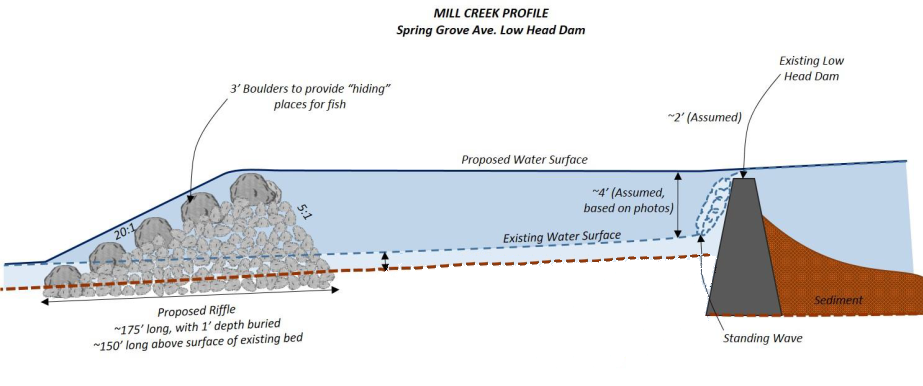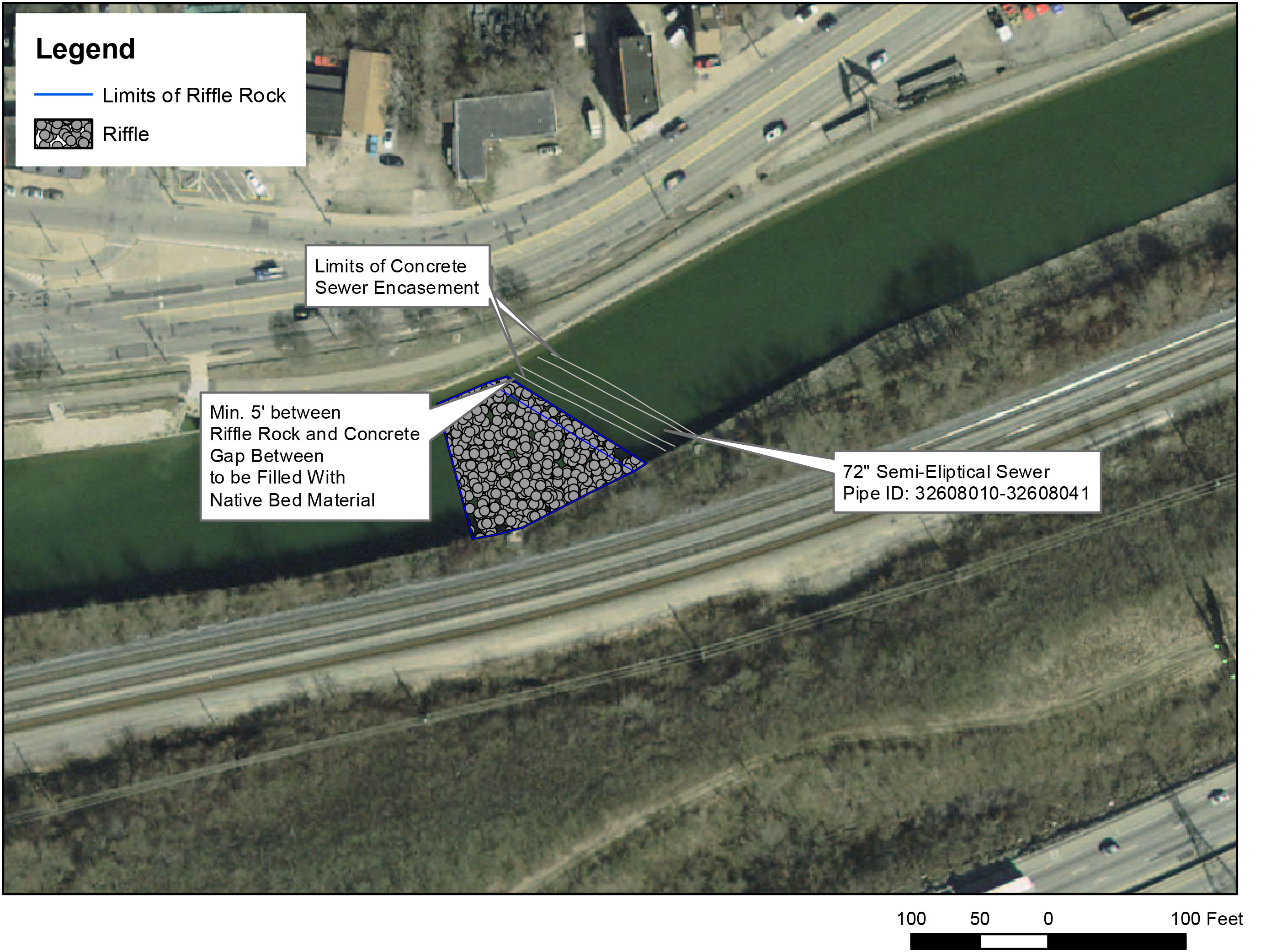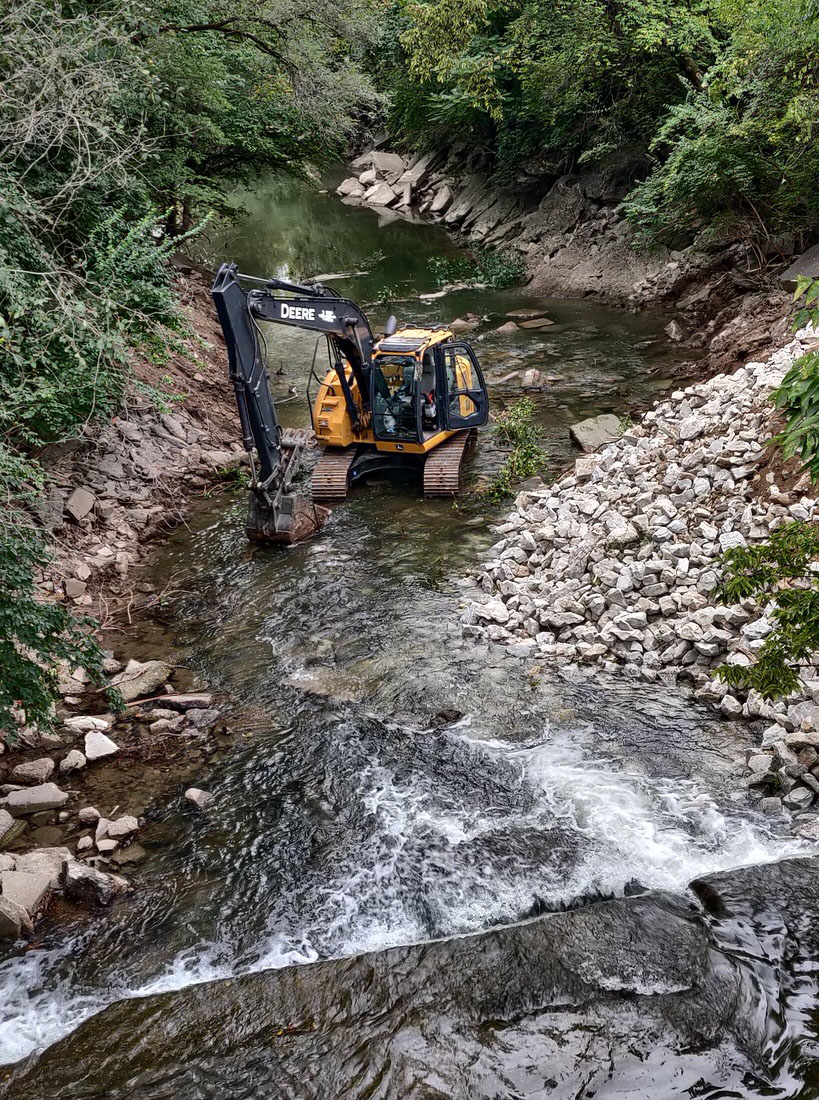Mitigating Low-Head Dams
The recovery of local streams isn’t just dependent on reducing sewer overflows or controlling pollutant discharges. It’s also necessary to mitigate physical alterations to waterways to improve habitat for fish and other aquatic organisms.
Toward that goal, MSD and other organizations like the MILL CREEK ALLIANCE > are working to eliminate low-head dams on the Mill Creek mainstem.
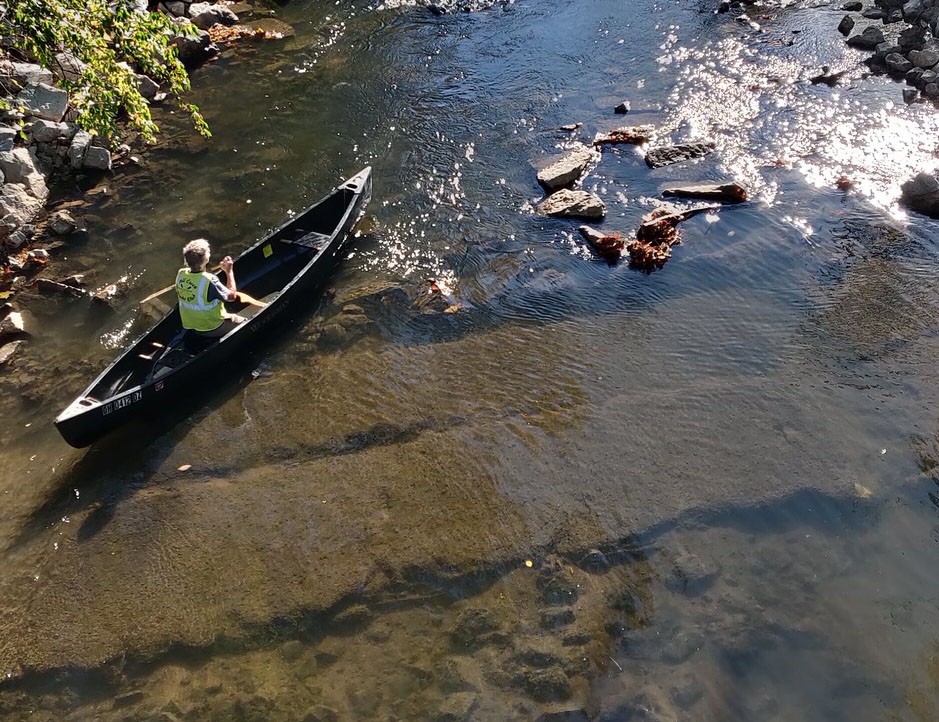
PROGRESS
As of fall 2023, there are only six dams left on the mainstem, down from a total of 29.
The Mill Creek Alliance completed mitigation of a low-head dam at river mile 12.2 near Clark Street in Arlington Heights in November 2023. The project was fully funded by a $229,000 Section 319 grant from the Ohio EPA. In early 2024, the Alliance will mitigate a large low-head dam at river mile 12.0 (known as Bonecrusher Falls), also funded by a 319 grant, which will reduce the total number of remaining dams to five.
The Alliance was recently awarded two more 319 grants to mitigate dams at river miles 11.8 and 13.4 in fiscal year 2025. This will reduce the total number of remaining low-head dams to three and eliminate the last two remaining large low-head dams.
In the near future, the Alliance hopes to focus on removing five remaining low-head dams on West Fork Creek, a tributary of the Mill Creek.
Low-dam mitigations on the Mill Creek mainstem have been performed by a number of organizations and partners, including MSD, the Mill Creek Alliance, the Mill Creek Restoration Project, Mill Creek Watershed Council of Communities, and the City of Cincinnati's Office of Environment and Sustainability, among others, since the early 2000s.
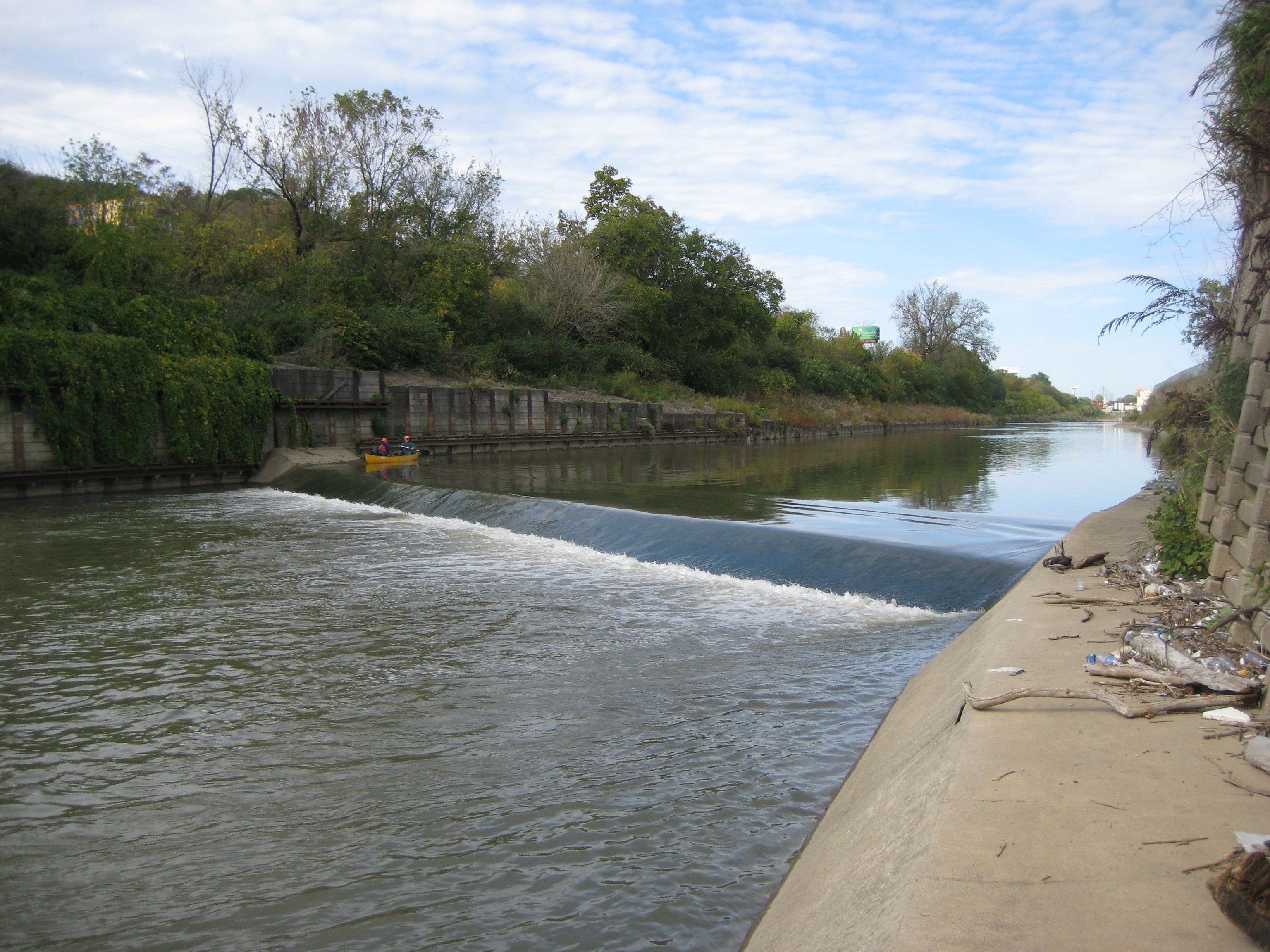
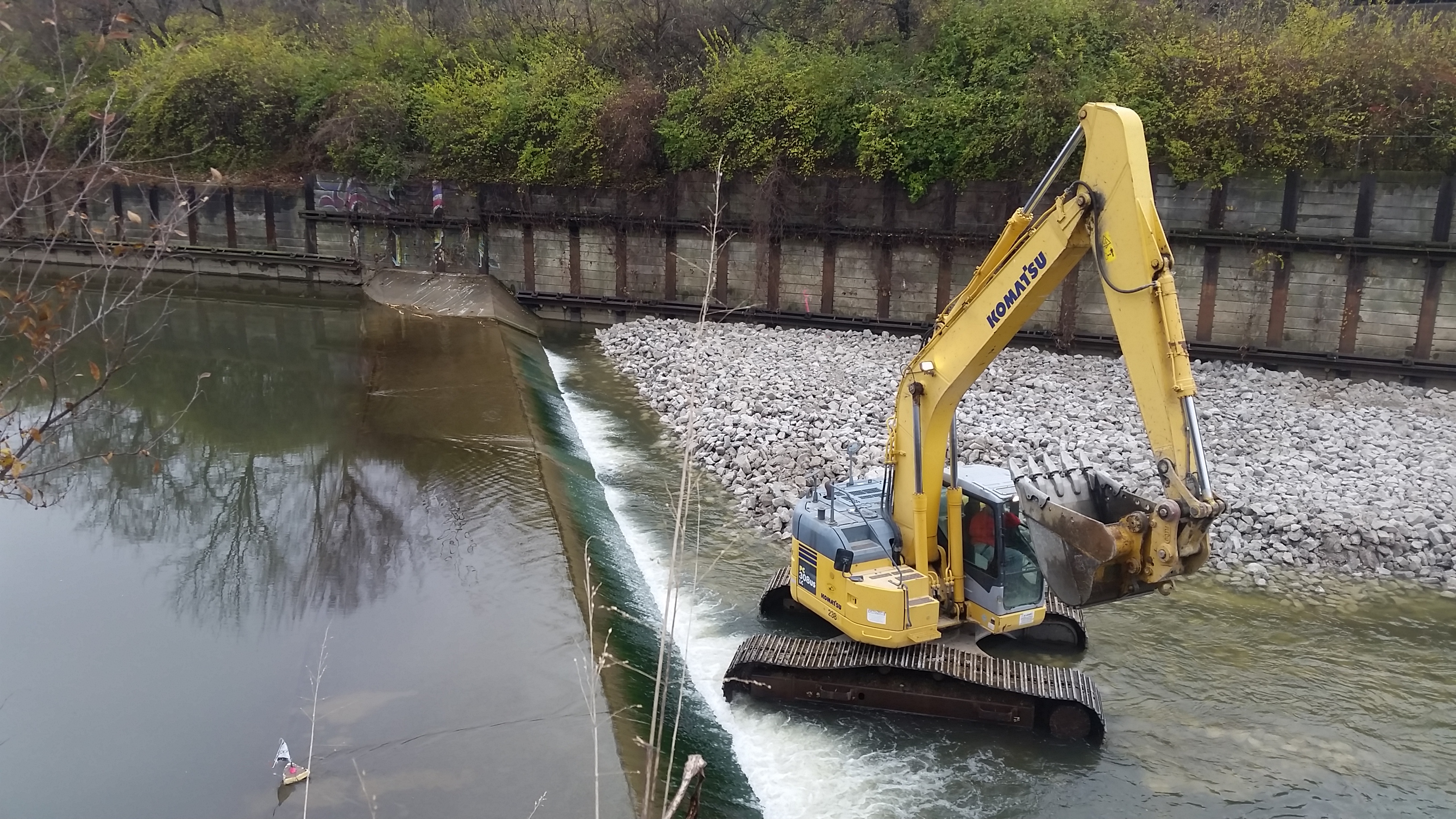
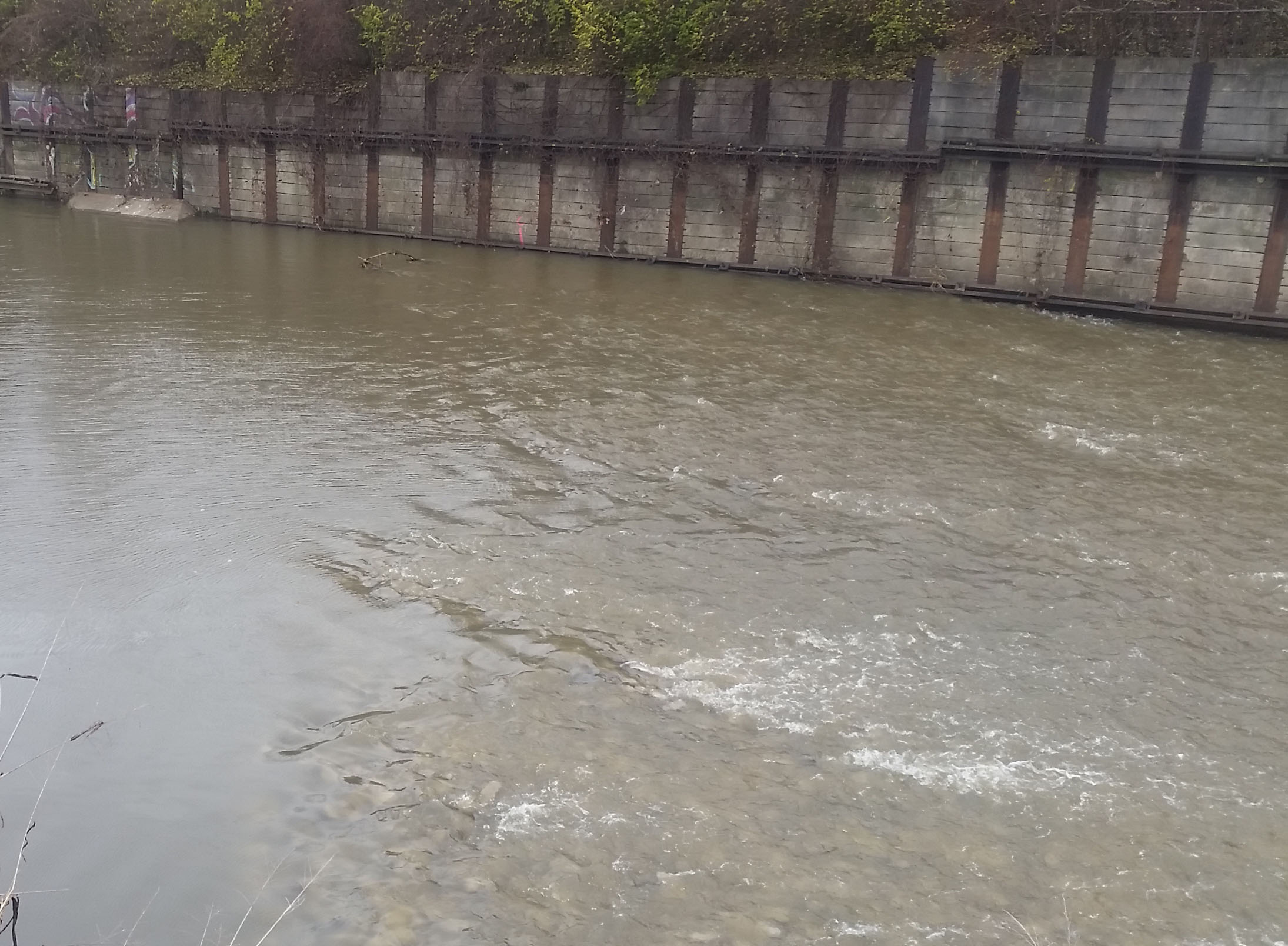
MSD has funded or helped fund at least five low-dam mitigations, including two in 2006 and two in 2017:
- Mitigation of a low-head dam (encasing a 12-inch-diameter sewer) just south of the Clifton Avenue overpass in 2017. MSD provided local match funds for a 319 grant awarded to the Mill Creek Watershed Council of Communities and the city's Office of Environmental & Sustainability.
- Mitigation of a low-head dam (encasing a 72-inch-diameter sewer) adjacent to Salway Park off Spring Grove Avenue in 2017. MSD provided local match funds for a 319 grant awarded to the Mill Creek Watershed Council of Communities and the city's Office of Environmental & Sustainability.
- Mitigation of low-head dam just downstream of North Bend Road in 2006, done as an MSD Supplemental Environmental Project (SEP) per our Consent Decree.
- Mitigation of a low-head dam (encasing an interceptor sewer) just downstream of the Hopple Street bridge in 2006, done as a SEP.
- Mitigation of an abandoned road across the Mill Creek near Gest Street in 2006, done as a SEP.
WHAT IS A LOW-HEAD DAM?
Low-head dams are typically concrete structures that encase (for protection) a sewer pipe or other utility line that crosses a stream aboveground. These dams, which normally produce vertical water surface drops of 1-15 feet, prevent fish from migrating upstream and impact water quality.
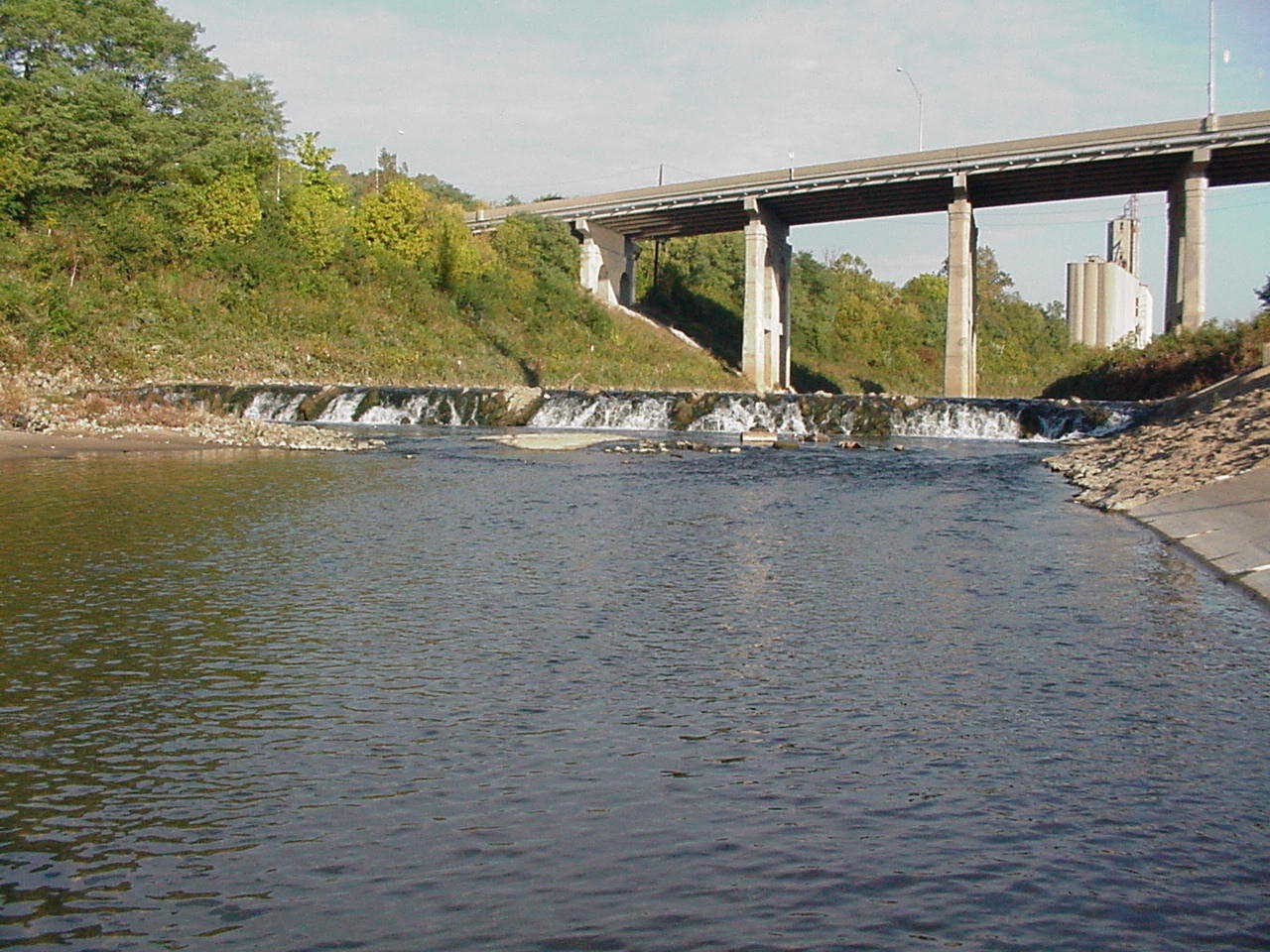
HOW DOES A LOW-HEAD DAM IMPACT WATER QUALITY AND HABITAT?
Low-head dams alter natural habitat and impair a stream’s ability to support a functional ecosystem. Adverse effects of low-head dams include the following:
- Low-head dams block the upstream movement of fish and other species, impacting their reproductive cycle. They change free-flowing river habitat and turn it into pond-like habitat, an environment where fish adapted to free-flowing conditions do not fare well. This usually leads to substantial decreases in the number and types of fish behind a dam.
- Water quality is impaired by low-head dams. Dams create conditions favorable to algal growth by slowing water and trapping sediment and nutrients. This can also significantly deplete the oxygen in the water behind a dam, leading to fish kills.
- Sediment transport is interrupted by low-head dams, aggravating undesirable sedimentation processes. Low-head dams can create barriers to bedload transport, inducing aggradation upstream, while simultaneously encouraging erosion immediately downstream of the dam.
- Low-head dams can make recreation difficult or hazardous.
HOW ARE LOW-HEAD DAMS MITIGATED?
Rock riffles are constructed downstream of each low-head dam to raise the water level and submerge the dam during most flow conditions. In addition, boulders are placed on the downslope side of the riffle area to introduce additional habitat patches and serve as a fish ladder, allowing fish to “hide, or rest, while swimming upstream, over the riffle.
